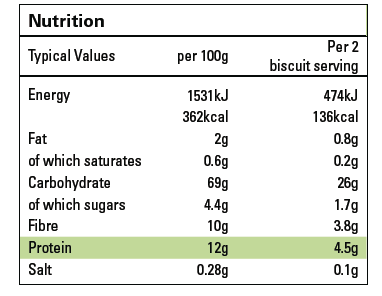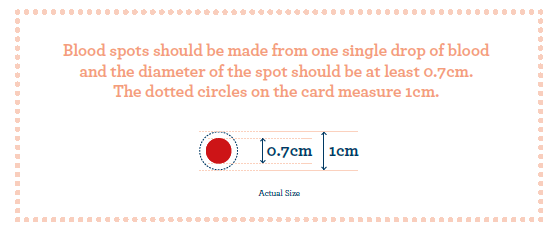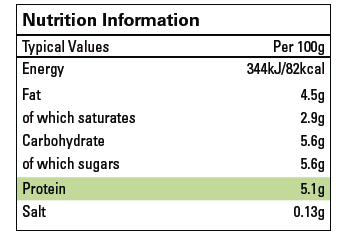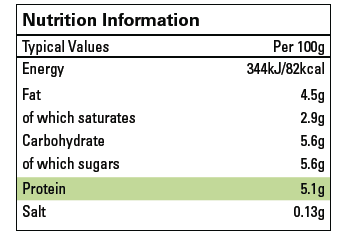When you have PKU it is particularly important to know how to read food labels.
This will enable you to check the protein content of foods and work out if the food is suitable for your diet without counting it as a phe exchange.
If you are not used to doing this, this might seem confusing and overwhelming at first, but with practice this should become easier.
As a reminder, the protein in food is counted as phe exchanges. 1 phe exchange is the amount of food that provides 1g of protein.
1g of protein = 50mg of phe
So, 50mg of phe = 1 phe exchange
Most pre-packed foods have nutritional information on the back or side of the packaging.
Here is an example of the nutritional information on a Weetabix cereal packet:

This label provides information on energy content expressed as kilojoules (kJ) and calories (kcal). Information is also provided on the typical fat, carbohydrate and most importantly for PKU, protein content. All nutrition information is provided per 100 grams and sometimes per portion of the food. So, in this instance 2 biscuits of Weetabix contain 4.5g of protein.
How to read food labels
Unless a food is a specially manufactured low protein food, then it is extremely unlikely that the phe content will be provided on a food label.
Sometimes food labels will state that the product contains protein. However, the ingredients list may be made up of foods which you know are exchange free. If this is the case, the food can be eaten without contributing towards phe exchanges.
However, the phe content can be estimated from the protein content. From this, the number of phe exchanges in a certain quantity of food can be calculated.
To work out if a food needs to be counted as a phe exchange look at the protein content on the label. If the protein is 0.5g or less per 100g, then this food is classed as exchange free (please note, this does not apply to plant-based alternatives to milk, please speak to your dietitian about this). However, if it is over 0.5g per 100g, then you will need to calculate how much of that food is a phe exchange. Your dietitian will tell you how many phe exchanges are allowed each day.
The National Society of Phenylketonuria (NSPKU) dietary information booklet provides a comprehensive list of products which are exchange free. For further information, visit www.NSPKU.org.
Read less







